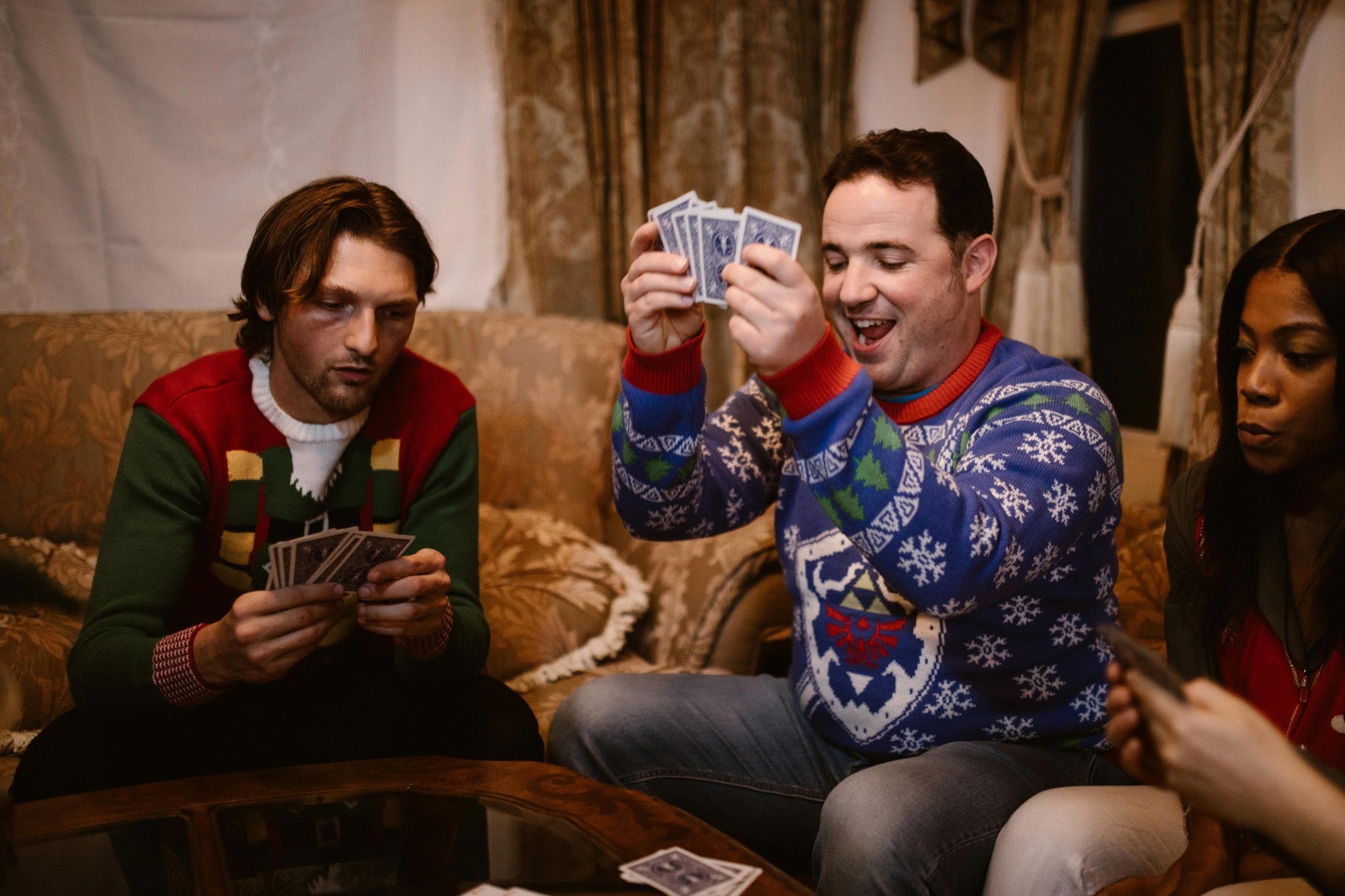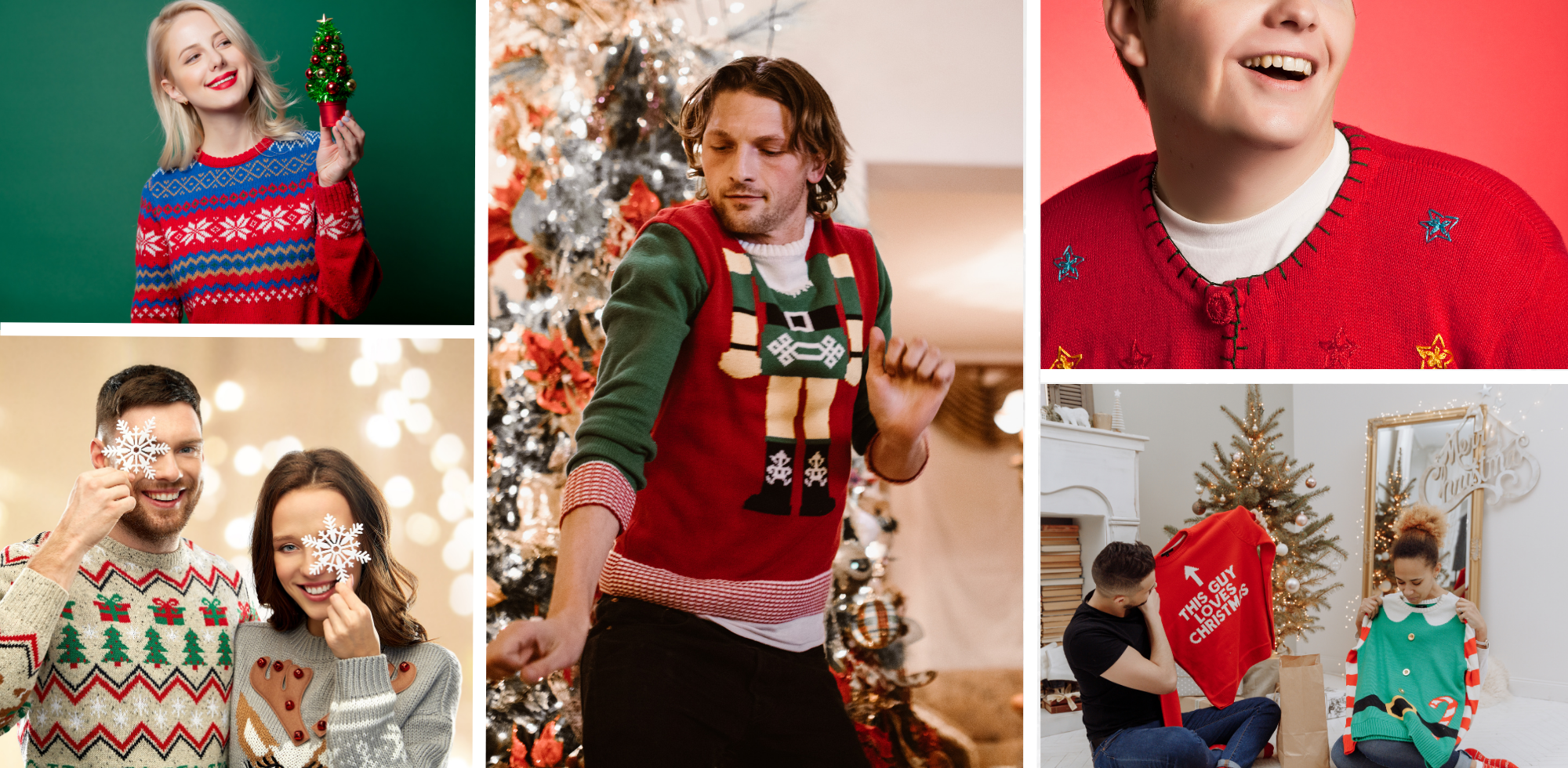The phenomenon of the ugly Christmas sweater, a trend that has woven its way into the fabric of Canadian holiday traditions, is a story of humor, community, and festive spirit. Once relegated to the back of the wardrobe, these garish garments have made an astonishing comeback, becoming a beloved staple of the holiday season across Canada. But how did ugly Christmas sweaters transition from fashion faux pas to a cherished holiday tradition? Let’s unravel the threads of this uniquely Canadian tale.
The Origins: The journey of the ugly Christmas sweater began in the 1980s, but it wasn’t until the early 2000s that the trend truly took off in Canada. Initially, these sweaters were earnest attempts at holiday cheer, often hand-knitted gifts from relatives, adorned with reindeer, snowflakes, and other festive motifs. However, as fashion evolved, these earnest creations fell out of favor, only to be rediscovered with a sense of irony and nostalgia.
The Rise of Ugly Christmas Sweater Parties: The turning point for ugly Christmas sweaters in Canada can be traced back to the advent of themed parties. The first of these gatherings were small, tongue-in-cheek affairs among friends, but they quickly gained popularity, becoming a nationwide phenomenon. These parties, dedicated to donning the most outrageous and tacky Christmas sweaters, turned the wearing of these garments into a playful competition, fostering a sense of community and shared humor.
A Symbol of Canadian Humor and Warmth: Canadians are known for their ability to laugh at themselves, and the ugly Christmas sweater became a perfect vehicle for this self-deprecating humor. Moreover, in a country known for its cold winters, these sweaters offered a warm, cozy embrace. They encapsulate a sense of togetherness and comfort, qualities that are highly valued during the Canadian holiday season.
Inclusivity and Diversity: As the trend grew, the variety of ugly Christmas sweaters expanded, reflecting Canada’s multicultural mosaic. Sweaters now feature everything from traditional holiday motifs to designs incorporating cultural symbols from around the globe. This evolution speaks to Canada’s inclusive spirit, with the ugly Christmas sweater becoming a canvas for expressing diverse holiday traditions and celebrations.
Media Influence and Commercialization: The media played a significant role in catapulting ugly Christmas sweaters from a niche trend to a national tradition. Television shows, commercials, and social media platforms showcased celebrities and everyday Canadians alike, embracing the trend with gusto. Retailers were quick to catch on, and now, every holiday season, stores across Canada stock an array of ugly Christmas sweaters, from the hilariously hideous to the tastefully tacky.
Environmental and Social Impact: The ugly Christmas sweater trend has also been embraced by thrift stores and environmental activists, promoting sustainability through the reuse and recycling of vintage sweaters. Moreover, many organizations have leveraged the popularity of ugly Christmas sweaters for charitable causes, hosting sweater-themed fundraising events that support local communities during the holiday season.
A Reflection of Canadian Identity: The ubiquity of the ugly Christmas sweater during the holiday season has become a reflection of Canadian identity itself—playful, inclusive, and warm-hearted. It’s a tradition that celebrates not only the joy of the holiday season but also the value of coming together, sharing laughs, and making memories.
In conclusion, the journey of the ugly Christmas sweater in Canada is a testament to the country’s capacity for joy, community, and inclusivity. What began as a fashion oddity has transformed into a cherished holiday tradition, symbolizing the warmth and humor that define the Canadian holiday experience. As Canadians, donning an ugly Christmas sweater is more than just a festive fashion statement; it’s a celebration of what it means to embrace the holiday spirit, together.




